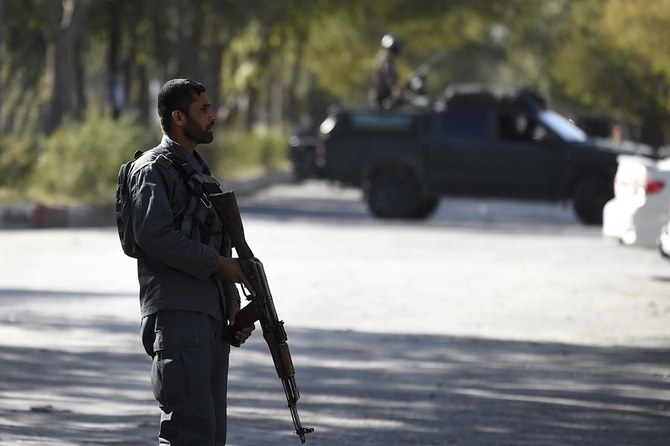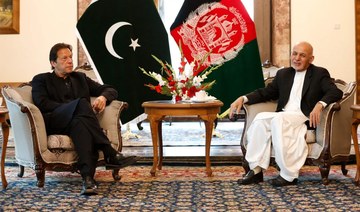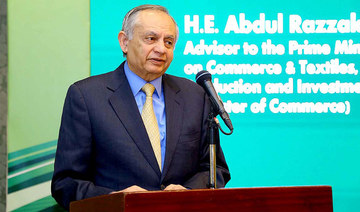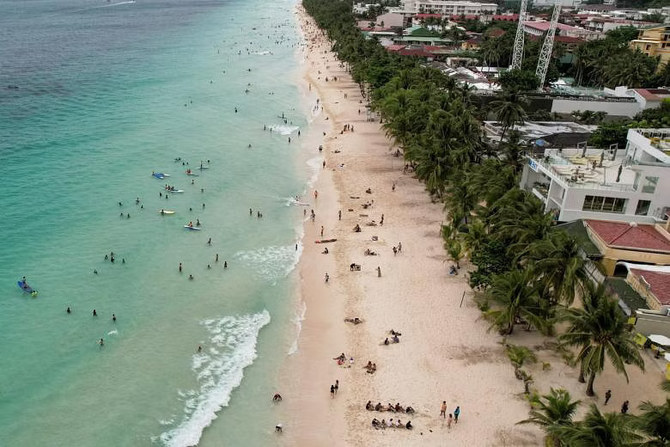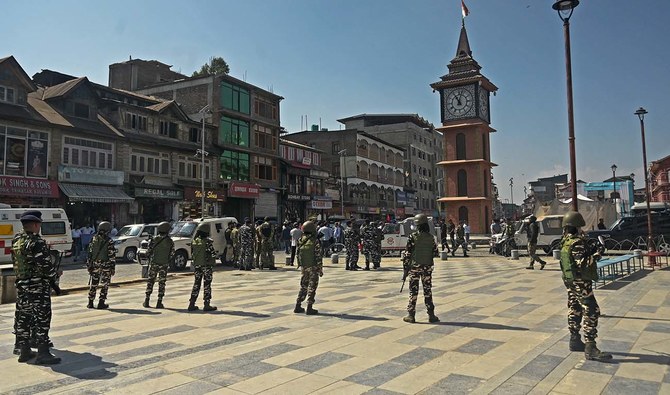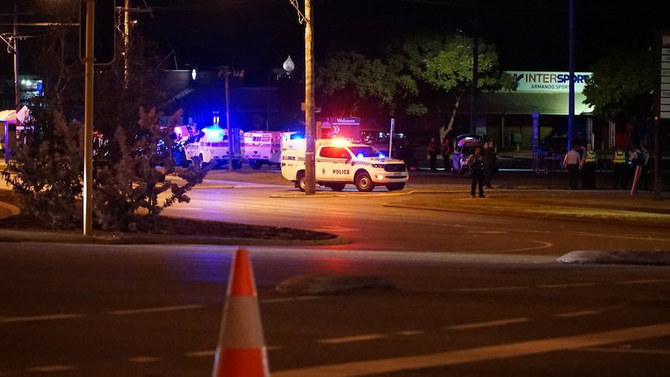KABUL: At least eight civilians were killed and dozens injured after more than 20 rockets struck various parts of Kabul during rush hour on Saturday, with officials saying the latest act of violence was “terrorism.”
“The terrorists fired 23 rockets on residential parts of the city today…Initial findings show that at least eight people were martyred and 31 wounded,” Interior Ministry Spokesman Tariq Aryan told Arab News.
Several had been rushed to various hospitals, with the Italian-run Emergency Hospital saying that it alone was treating 28 injured.
The Taliban denied involvement in the attack, which no other group had claimed responsibility for either as of reporting time.
Aryan added that the rockets, “highly likely BM 12s,” were fired from “two vehicles in two parts of the city,” landing in multiple, heavily populated areas, including near the secure Green Zone, which houses several embassies.
Hawkers and pedestrians were among the majority of casualties, public health officials told Arab News. At the same time, a source — requesting anonymity, as he was not authorized to speak to the media — said that two of First Vice President Amrullah Saleh’s guards were also wounded after one of the rockets landed close to his office.
Saturday’s attack is similar to others that took place in Kabul in recent months.
The first one was in March and was aimed at derailing President Ashraf Ghani’s swearing-in ceremony. A few weeks ago, another attack targeted the iconic Kabul University, with more than 30 killed in the strike. Affiliates of Daesh claimed responsibility for both.
This latest attack came amid a surge of violence across Afghanistan in recent months and took place a day after media reports said that a breakthrough was expected to be announced in the intra-Afghan talks in Doha, after more than two months of a deadlock in negotiations between the Taliban and Afghan government representatives.
According to the Interior Ministry, more than 1,200 civilians have died in various strikes across the country since the talks began on Sept. 12, despite a pledge by both groups to reduce violence.
While the government blames the Taliban for the spike in attacks, human rights officials have also held Afghan forces responsible for civilian deaths, alleging that most of them were caused by air raids.
Witnesses and residents said that while Kabul has been the scene of “far deadlier and complex raids for years,” an attack where assailants fire rockets from one part of the city to another was “a relatively new method.”
Experts, however, called out the government for its failure to protect civilians from “terrorism.”
“Terrorizing the city. Terrorizing the civilian population. This goes beyond war. This is terrorism,” Shazada Akbar, chairperson of Afghanistan’s Independent Human Rights Commission, tweeted on Saturday.
Others highlighted the growing insecurity in Kabul and the inability of the security forces to curb violence.
“And there is no end to the failure of security and intelligence teams [of the government]. What will be your response to the blood of people?” Tamim Asey, a former deputy defense minister who served in the current government, tweeted on Saturday.
Hours before Saturday’s attack, the Interior Ministry said two small “sticky-bomb” explosions had been reported elsewhere in the capital as well, including one on a police car, killing a policeman and wounding three others.
Aryan said no group had claimed responsibility for it yet.
The uptick in attacks comes amid rising frustration among a majority of residents in Kabul, who are grappling with poverty, inflation, a surge in crime rate, unemployment and long power cuts as the harsh Afghan winter sets in.
Wahidullah Ghazikhail, a spokesman for the former government who now serves in a think tank, said the series of attacks could “damage the prestige” of Ghani’s administration at home and abroad even further.
“This sort of attack harms the government’s image in the eyes of people, creates further distance between them and also discredits the government before the international community as some countries may pull out their diplomats for their own safety,” he told Arab News.
He added that without “inside help,” it would not have been possible for the attackers to drive vehicles around the city “with rockets mounted on them and bypassing security.”
After the incident on Saturday, the US Embassy released a statement warning its citizens against traveling to Afghanistan.
“The security situation in Afghanistan is extremely unstable, and the threat to all US citizens in Afghanistan remains critical,” it said.
To some, the attack served as a reminder of a time after the withdrawal of Soviet troops from Afghanistan in the late 1980s when cities, including Kabul, came under a barrage of rockets fired by insurgents daily.
Some fear history may repeat itself after the US-led foreign troops leave the country soon as part of a historic accord signed in February to end more than 19 years of war.
The ongoing intra-Afghan talks were part of the February deal, but progress has been slow.
Two Afghan government negotiators told Arab News that the two teams were “working to iron out the differences” and begin the formal round of talks.
“There are ongoing talks and meetings to overcome the deadlock, but no progress has been made yet,” said a source requesting anonymity as he was not authorized to speak to the media.
To accelerate the process and amid hopes of the stalemate ending soon, US Secretary of State Mike Pompeo is expected to travel to Qatar to meet Taliban and Kabul negotiators on Saturday, according to media reports.
Ghazikhail, however, said the measure taken could send out a “tough message” for everyone involved.
“Pompeo is coming with the tough message that the US is withdrawing its troops, that Afghans must engage in serious talks and agree on a future political settlement, and that the US will not be here forever.”



